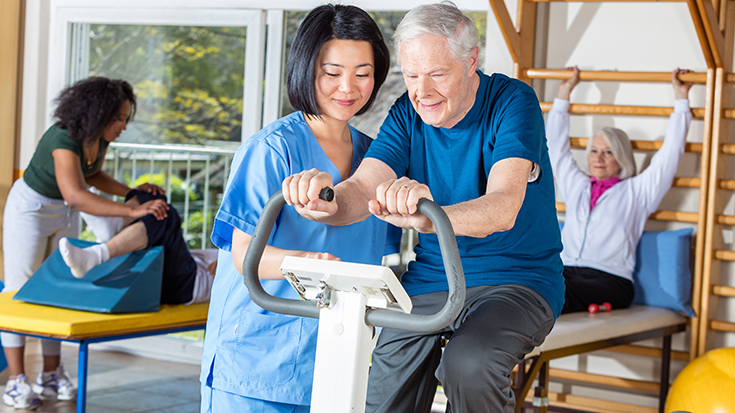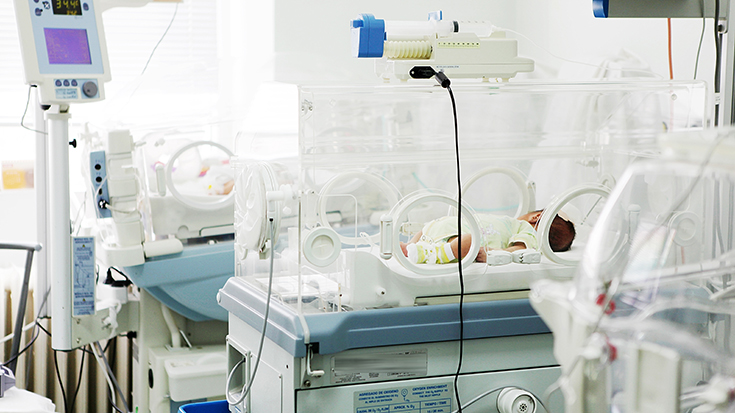
Research published in JAMA has confirmed what many RTs have long known — getting COPD patients who are hospitalized with an acute exacerbation into pulmonary rehabilitation sooner rather than later is the way to go.
The study, led by investigators from the University of Massachusetts Medical School, found patients who enrolled in PR within three months of hospital discharge were significantly less likely to have died at one year, 7.3% vs.19.6% for those who enrolled later or didn’t enroll at all. Every three additional PR sessions attended improved mortality outcomes even more.
With National COPD Month in full swing, we decided to ask two AARC members who have spent much of their careers working with PR programs to share their thoughts on early PR.
Encouraging results
Debbie Koehl, MS, RRT, RRT-NPS, AE-C, from IU Health Methodist in Indianapolis, IN, says she has seen the results of the JAMA study and views them as not only encouraging, but also a way to recruit more physicians to recruit their own patients to PR programs.
“I think it shows what we in pulmonary rehabilitation already know — we keep patients out of the hospital and healthier,” she says. “We are more than just exercise and education, we are disease managers and triage.”
Rita Edwards, BS, RRT, RPFT, from Main Line Health in Pennsylvania, believes engaging patients in the PR process as early as possible helps them build on the recovery they have already begun in the hospital.
“Patients do recover to a certain level, but we don’t want them to be complacent with lower activity levels and ADLs,” she says.
How can PR programs increase the number of patients who receive early PR? Edwards believes the process is best begun by visiting patients while they are still in the hospital and letting them know that PR is available post-discharge to help them learn how to manage their disease.
Koehl suggests automatic discharge orders to PR for patients with a diagnosis of COPD and working with your population health COPD programs to increase referrals. “Get an order at discharge,” she says. “It allows us to immediately get the ball rolling and engage the patient.”
She also advocates for educating discharge planners about the value of PR and asking the PR program medical director to reach out to his or her colleagues. “Also, we use a lot of hospitalists, so make sure they know too,” says Koehl.
Talking points matter
Edwards says COPD patients at her hospital are scheduled for an outpatient visit to the PFT lab as soon as they have recovered from their acute exacerbation, and since the PFT and PR staffing is the same, it provides another great opportunity to introduce the idea of attending the PR program.
She warns her fellow RTs, though, to be careful how they promote the PR program to recently recovered COPD patients. For example, stressing the exercise component of the program may not be the best idea when talking to patients who have just gone through a hospitalization and are probably thinking they need to go home and rest.
“Using the correct talking points and helping them understand that the program is a continuation of their healing process once they recover from the acute episode” is a better tactic, says Edwards.
As she mentioned earlier, failure to get the patient to agree to PR prior to discharge doesn’t mean game over either. “The process shouldn’t stop with the patient discharge,” she says. The PR staff can follow patients as they make their post-discharge office visits and even include an “interview visit” where the topic can again be addressed, most likely during their visit for pulmonary function testing and/or a six minute walk test.
Pandemic planning
Both Koehl and Edwards admit following through with these recommendations on getting COPD patients into PR soon after a hospital discharge has been made more difficult by the COVID-19 pandemic, but they still see paths forward.
Koehl notes there has been a lot of talk in PR circles about starting patients in a virtual program where everyone can gather together at a certain time using technology like Zoom. “While this might not be for everyone, it is something we need to strongly consider,” she says. “Engaging patients face-to-face is crucial to their success.”
She says they tried to use phone calls to keep patients on track during the shutdown in her program earlier this year, but with limited success. “Phone calls are great, but they don’t equate to exercise,” she says. While patients appreciated the calls asking after their health and well-being, only their most motivated patients kept up with their exercise regimens.
Even sending them special home exercise packets with lots of suggestions on how to exercise at home didn’t do the trick. “It really showed us how powerful it is to work with our patients face-to-face and the importance of that social aspect of PR,” she says.
Edwards emphasizes the precautions programs now need to take when resuming in person PR complicate matters further. At her hospital, patients are now coming in person, but only two per each hourly session, and all patients are required to wear a mask the entire time. Patients are kept six feet apart as well, and the exercise equipment, along with chairs and countertops, must be wiped down after every visit. Arm sleeves are used for blood pressure cuffs and individual pulse oximeters are used and then disinfected after each use. Staff wear surgical masks and eye shields.
The changes are vital to ensuring safety, but they do limit how much the program can accomplish. “The overall outcomes have improved at the time of discharge, although the 6MWT has been less of a vigorous improvement as we have seen before, most likely due to limitations of the PR visit,” she says.
PR staff make the difference
As the JAMA study showed, getting patients to buy into PR early after their discharge from the hospital can do wonders for their health. As Debbie Koehl and Rita Edwards show, clinicians staffing PR programs play a critical role in making that happen — even in the midst of a pandemic.
Email newsroom@aarc.org with questions or comments, we’d love to hear from you.














